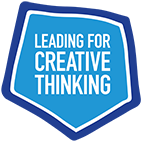Creativity across the curriculum
Dunn, K. et al. (2021) Massachusetts: Center for Curriculum Redesign. Embedding competencies within disciplines: Deliberately, explicitly and systematically
Read the whole article here.
Summary
In this report the Center for Curriculum Redesign offers a model of curriculum and offers school and system leaders some key messages for embedding competencies such as creativity in a wide range of subjects. The Center sees creative thinking as a combination of creativity and critical thinking and describes it as one of a set of wider skills needed today alongside knowledge and character.

The Center for Curriculum Redesign sees competencies as being at the heart of forward-looking curriculum. While they do not define competency, it is clear from other research they have undertaken that they mean a dynamic combination of the knowledge, skills and attitudes learners need to thrive and participate throughout life in a complex world. In this they focus both on what someone can do, on performance, and also on the behaviours involved in the process. They group the elements of competence under three headings - skills, character and meta-learning.
Drawing on responses from teachers of the ‘State teacher of the year’ in the USA, the researchers mapped key competencies against subject disciplines (in the USA social studies includes history, geography, economics, civics and political science).

The darker green indicates strong association between competence and subject, light green suggests some overlap and grey indicates little or no connection, according to the teachers interviewed.
Recommendations
From their research the authors suggest that schools which are serious about embedding competencies like creative thinking or resilience need to be:
1. Deliberate - consciously and intentionally identifying and integrating them, scaffolding their teaching with practice across different contexts to promote learning transfer.
2. Explicit - competencies deserve as much focus as knowledge. While many lessons already incorporate creative components, this is not the same as devoting time to
properly present and practise subskills of, for example, creativity.
3. Comprehensive - though not everyone will be an expert in each competency, lacking any one completely can be disastrous (e.g. a leader without ethics). Learners should encounter chances to improve at all competencies while at school.
4. Systematic - to ensure the quality of a curriculum integrated with competencies, it is helpful if each competency is paired with the disciplines that best support them, and vice versa, in ways that align with both teacher expertise and insights from research.
5. Demonstrable – pupil learning of competencies must be measurable against evidence-based approaches to assessment (page 5).
Reflecting Together
1. Do you find the way the Center for Curriculum Redesign model of curriculum helpful? In what way?
2. Do the five recommendations make sense to you? Which of them best align with your own thinking? With which do you think your school is making most progress? How might you use these in your own leadership practices?
3. Is there a danger in suggesting that some subject disciplines are not connected with creativity, and, if so, what might this be?
Embedding competencies within disciplines: Deliberately, explicitly and systematically
If you enjoyed reading this article, take a look at this story from Claire Badger who shares her initial experiences of addressing these recommendations through a teacher learning community.
